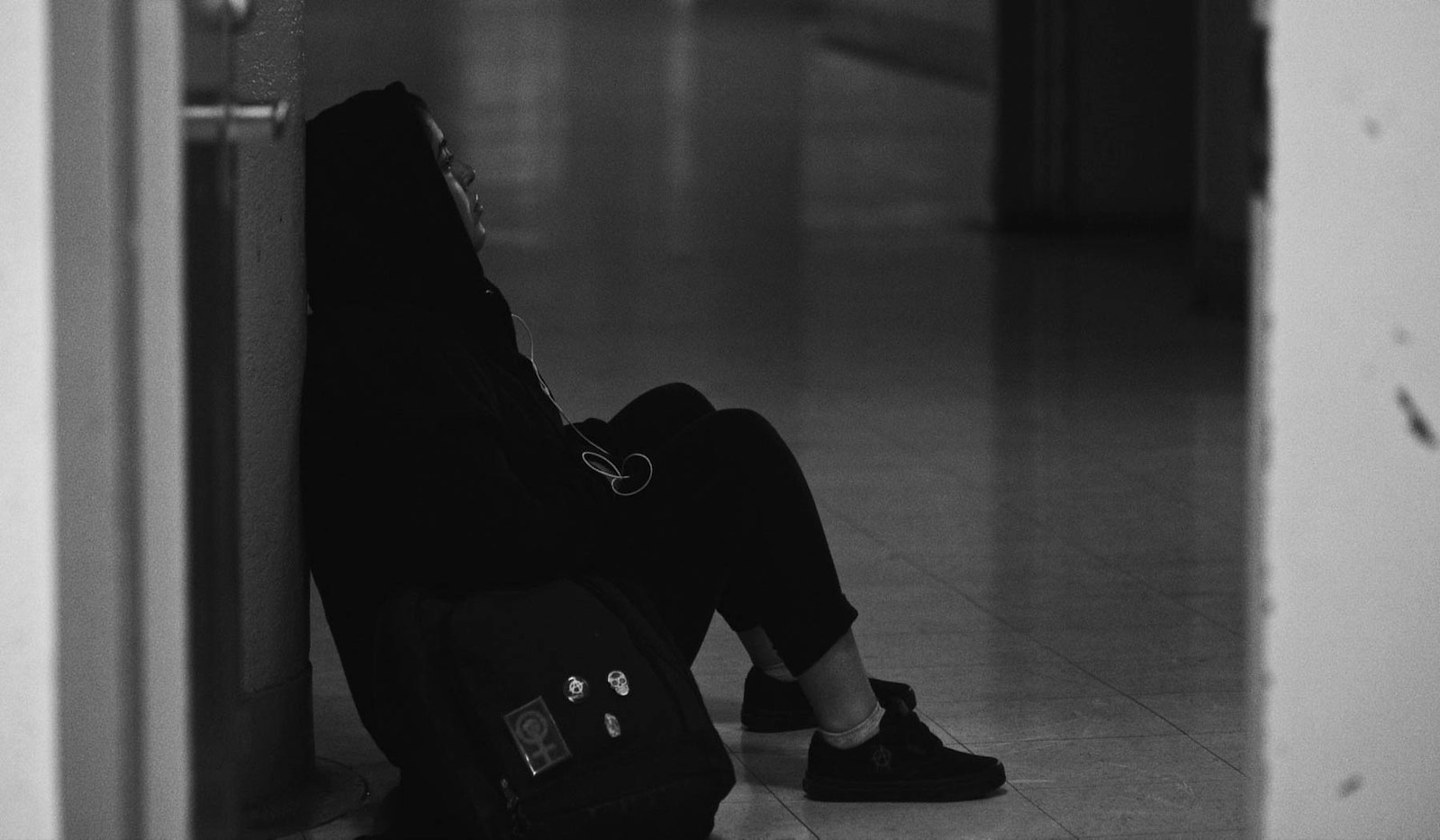
La Leyenda Negra: A Latinx coming-of-age story
The film, directed by Patricia Vidal Delgado, was inspired by the real-life experiences of immigrant youth at Compton High School in Los Angeles.
La Leyenda Negra, directed by Patricia Vidal Delgado, tells the story of young, head-strong Salvadorian Aleteia, played by Monica Betancourt. An intelligent young woman, Aleteia has a full-ride scholarship to UCLA. News of the termination of Temporary Protected Status (TPS) puts both her life and education at risk. Aleteia navigates her anger towards the systems affecting her immigration status by joining an anarchist group that spray paints and burns buildings. Having set a fire in her previous high school, Aleteia transfers to Compton High School, where she forms an intimate bond with popular girl Rosarito. La Leyenda Negra provides a pointed social commentary to the issues affecting teens and immigrants in the United States.
The director and protagonist of this queer coming-of-age story sat down with AL DÍA for an exclusive interview on Feb. 1 at the Sundance Film Festival.

What was the inspiration behind the film "La Leyenda Negra"?
Delgado: I had shot a short film in Compton, California, before called The Hood and I had worked with a professional actor before, Juan Reynoso. Apart from being an actor, he’s also a teacher at Compton High School and he’s the head of Media and TV production. I had a great time shooting in Compton. I love the stories and talent. [Reynoso] said, “Why don’t you come to Compton High School to talk to my students?” I went to Compton High School and fell in love with the kids and their stories. A lot of them are Latino students so they go through a lot of what every other American teenager goes through but, on top of that, they have immigration statuses that are currently under attack because of this administration. That’s where the seed for La Leyenda Negra was planted.
Betancourt: I fell in love with the story and the message that it has. For a lot of Latinos, it’s something very big for us since it’s our story being told, which is not something that is out there. I was very nervous and shy because it’s my first time acting. I took the risk and I’m very thankful for taking it because we’re here today [at Sundance] and our film is being seen by a lot of people, which is what we wanted.
What was the writing process like? Was it a collaborative effort between the director and the students at Compton High School?
Delgado: I started the script with the character of Aleteia. She was kind of like the locus from where the rest of it emerged. For me, it was very important to capture the way that Compton kids speak; the Spanglish that they use and the way they sometimes start a sentence in Spanish and end it in English. I would often say to Monica or Sammie or Justin, “How would you say this if you were just saying this to your friend?” Me and my script supervisor Samuel Temblador would write it back into the script. We were really trying to capture their unique dialect in the film.
Betancourt: The class we were in was TV Production but the kids she [Delgado] met were the crew. We were so into this, we were always behind the camera as camera assistants, sound mixers, editing. We were always hanging together working on projects so that’s where she met us.
Delgado: It was informal. I would contact after class to meet in the auditorium. It wasn’t part of their curriculum. It was more meeting after school to work for a couple of hours. A lot of the kids helped with G&E and as extras. For the classroom scenes, all the kids you see there are all Compton High students. The bulk was shot at Compton High but parts were shot at UCLA.

Where did the name of the film stem from?
Delgado: “La Leyenda Negra,” as it’s referenced in the film, it refers to the demonization of Spanish conquistadores by partisan settlers. It essentially reflects a historical bias. The character of Aleteia challenges all bias in her fight for truth. That’s reflected in her involvement in the Compton “Black Block,” which is an underground political organization. “La Leyenda Negra” refers to themes of imperialism both old and new. Also, if you consider the English translation, it’s a nod to Aleteia’s involvement in anarchist circles.
Why is the film in black-and-white greyscale as opposed to color?
Delgado: The film references cycles of history and how things have a tendency to repeat themselves. It talks about imperialism, colonialism, persecution of the other, intolerance, and indifference. It asks the question: tradition or change? Talking with my DP [Director of Photography], he thought it would be a fitting representation of the polarity of choices that our lead character is forced to make as a potentially undocumented immigrant today in the United States.
What made you decide to make this a queer film?
Delgado: I started with the character of Aleteia and, to me, she was always kind of an oddity among teenagers. Despite her youth, she knows very much who she is. She is very outspoken, politically motivated, and academically driven. She knows who she is and she doesn’t apologize to anyone. So, for me, it would also make sense for her to be very sure of her sexuality. It just fell in with all the other elements of her personality. She’s very proud of who she is. Like she says in the film, “Why do you think that I care about what you think?” That’s very much Aleteia.

A lot of people critize Mosquita y Mari, another queer Latina coming-of-age story set in California, for not having a kiss. They argue that because the film doesn’t have a kiss, it’s not queer. Why did you decide to not include a kiss in La Leyenda Negra?
Delgado: It’s kind of where Aleteia and Rosarito are at in their relationship. It’s like Aleteia has kind of put her cards on the table to be like, “Yeah, I like you.” Rosarito’s reaction is she’s not quite ready for all that. Slowly, Rosarito gets ready for all that. It was significant that in their first truly intimate connection, they’re forced to run. That’s very significant for undocumented, TPS eligible, DACA eligible people. That you are forced to run. You are always going to be running no matter what. For me, it was organic to the story because it’s where they were in their relationship but also when they get to that point, they still have to run.
Why did you pick the name Aleteia for the protagonist?
Delgado: One of my best friends, who is Brazilian, her name is Aleteia. It was such an usual name, even in Portuguese. I asked my friend where her name came from and she said, “ It’s the Greek goddess of truth, Aleteia.” That was so profound and beautiful. Aleteia [in the film] is a truth-seeker and stands up for what she believes in. The name made sense for that reason.
What does Aleteia mean to you as the actress portraying her?
Betancourt: As the actress playing her, Aleteia is everything we look up to. For me, as a Latina, I would fight with her, we’re in this together. She’s a very strong woman and very feisty. That’s what a lot of us Latinas have, we’re very feisty. She’s somebody to look up to; she speaks her truth and she stands with what she knows is right for her. She acts like, “I’m not going to let you talk down to us because we know who we are. Whether you like it or not, we’re all in this together. We’re all Latinos and we all stick together.”

RELATED CONTENT
Did you know you were going to cast Betancourt as Aleteia?
Delgado: We had a casting session and, when I met her, even though she was very shy, I could see that underneath the shyness was a very strong woman. That’s when I saw that she would be able to give me what I need for the character of Aleteia because, despite her youth and other vulnerabilities, she’s very strong. I knew that Monica had that strength.
Betancourt: I didn’t see it in me but she did! [laughs]
How do you relate to the character of Aleteia?
Betancourt: Beside being in the [Media and TV Production course] crew, that was it. When I was walking from class to class, it was me just listening to music walking to class by myself. That’s one of things that Aleteia does a lot. She’s always alone. It’s always just me with my music and my hoodie. I’m very shy and she [Aleteia] is very outgoing and that’s one of the differences. She’s going to say what she says and what she feels and that’s who she is. I’m more quiet.
Why did you decide that Aleteia would be Salvadorian and TPS would be the immigration issue she is facing? It easily could have been an issue with DACA or another element of immigration.
Delgado: Out of the 417,000 immigrants that currently have TPS in the United States, the biggest percentage is from El Salvador. In LA, they are the biggest TPS community. That’s the reason why I went with Salvadoreños. My sister is a human rights lawyer and she sent me an article about TPS eligible countries and El Salvador losing that status in September, the start of the academic year. My thought was, “What about all of the students that have been applying to college? They’re being kicked out the day before classes start.” Now, the termination of the status has been extended but one day there might not be another extension.
There are a lot of political elements in the film. Could you speak about the podcast that Aleteia listens to throughout?
Delgado: That was Dorian Emmanuel Young, a rapper and civil rights activist. When I wrote the character of Dorian, I already had him in mind to play it. The podcast was something that came later in post-production because Aleteia always had the earbud in her ear. We could have just done music but my editor and I thought this would be a good opportunity to kind of show that she’s always in tune with that political discourse. That’s what she listens to in her spare time like she’s always got her mind on the larger political context of her situation.
Throughout the film, two big symbols were the fire and the “A” for anarchy. Where did that come from?
Delgado: Fire is as a symbol of enlightenment but one of revolution and change. It is also of passion because the film is also in some ways like a love story with the sexual tension between Aleteia and Rosarito. Ultimately, for Aleteia, I think that fire has a purifying force that gives her peace and release in her greatest moments of pain and anxiety. For me, Aleteia, in the script was drawn to the fire as a symbol of that release. The “A” for anarchy is a worldwide symbol but in Dorian’s podcast he says, “A is for anarchy but also alienation.” It’s also “A” for Aleteia as well.
How does it feel to be at Sundance? For you [Delgado], this is your UCLA graduate thesis film and for you [Betancourt] this was something you worked on in high school.
Delgado: When I got the call from the program, I thought it was a cruel joke. I thought someone was playing a prank. Then gradually, it was like “I didn’t hallucinate that phone call.” But I did think I had, to be honest.
Betancourt: It’s amazing, it’s shocking! It was something that, to be honest, I didn’t expect. But, we’re blessed to be here. It’s a big opportunity. We have one foot in, we can’t just take it back. We have to go all the way in. Especially with our backgrounds and where we come from, it’s something big for us in achieving.










LEAVE A COMMENT: